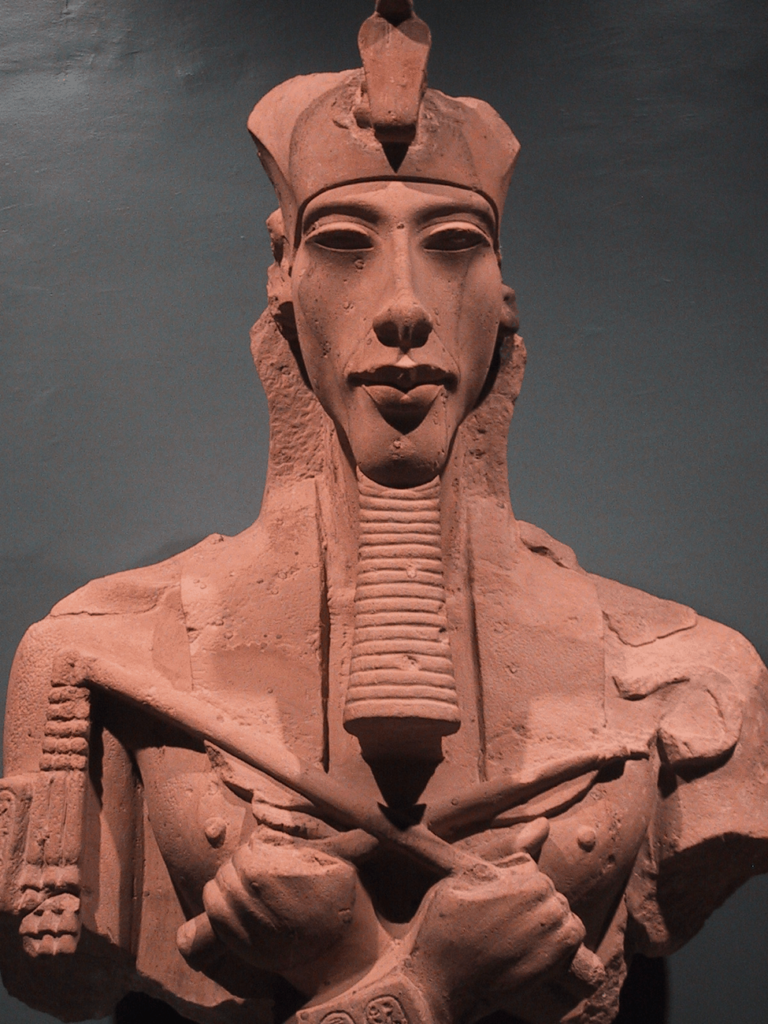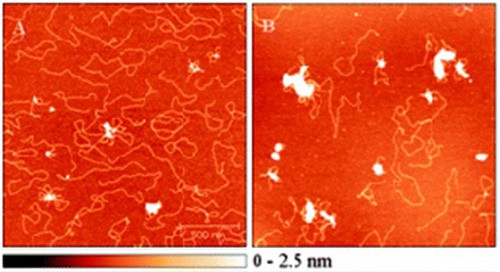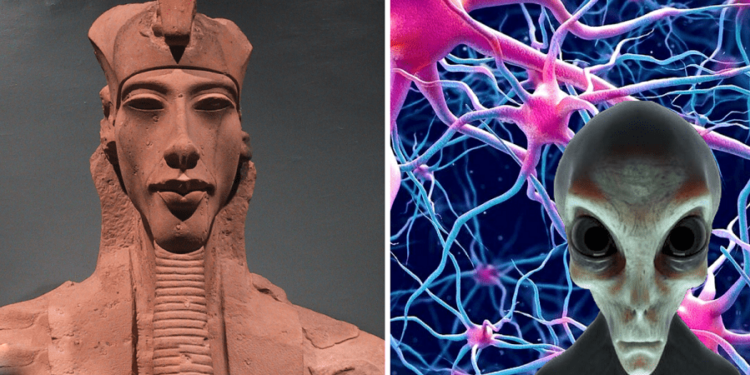The ancient Egyptians tried to erase his legacy from history, so very little is known about him. But what we know about this ruler makes us wonder who or what he really was. Unlike all previous pharaohs who were portrayed in excellent physical shape, Akhenaten’s appearance is surprisingly strange: almond-shaped eyes, a small abdomen, thin limbs, an elongated skull.
Akhenaten’s Monotheism

Akhenaten turned whole Egypt upside down, creating the greatest act of heresy the Egyptians had never known. He claimed that the Egyptians should have no longer believed in a pantheon of several gods, but worship one god. In this regard, there is an assumption that Akhenaten and the Biblical character Abraham may have been the same person. Researchers have discovered the bodies of many pharaohs and their family members in a mummified form, but no mummy of Akhenaten has ever been found. “But statuary and carvings from the time show Akhenaten alone as well as in affectionate family settings that included his main consort, Nefertiti, and their children. Such settings were never employed in artwork of pharaohs before or after Akhenaten.”

However, Akhenaten did not really believe in monotheism, he was absolutely convinced that other gods exist, but decided that all worship and prayers would be given to one God, Aten (the Sun God in ancient Egypt tradition). His ruling period is known as the Amarna Period. He also shifted the capital of Egypt from Thebes to the city he founded, known as Tell el-Amarna (or Amarna). This period is the most debated and studied period of Egyptian history.
DNA Study Of Pharaoh
Everything about Akhenaten was unusual, even his DNA.
In 2015, Stuart Fleischmann, an assistant professor of comparative genomics at Cairo University and his team published the result of a 7-year study. They mapped the genomes of nine ancient Egyptian pharaohs. Eight samples were completely normal, and the ninth one that belonged to Akhenaten was rather unusual.
“Fleischmann and his team subjected the precious samples of ancient DNA to a process called Polymerse Chain Reaction (PCR). In the field of molecular biology this technique is often used to replicate and amplify a single copy of a piece of DNA, giving researchers a clear picture of someone’s genetic fingerprint.

One of the culprits was a gene called CXPAC-5, which is responsible for cortex growth. The anomaly is visible in the image below.”
“Another interesting piece of evidence provides backing to this hypothesis. The image below shows two microscope photographs of osseous tissue sampled from the skull of Akhenaten and that of a different mummy of the same age.”
The skull is enlarged only by two processes: extreme aging and extreme genetic mutation, so Akhenaten could not be more than 45 years old. Archaeological evidence refutes this. In addition, electron microscopes have found signs of a nucleon scar, which is a sure manifestation of the healing of the DNA helix after exposure to strong mutagens.
According to Yale professor Irwin M. Braverman, the abnormality in Akhenaten’s appearance could be familial gynecomastia and craniosynostosis. Gynecomastia is the condition largely found in men whose chest swelled due to hormonal imbalance. Braveman said that Akhenaten’s father, grandfather and great-grandfather had familial gynecomastia. Akhenaten’s enlarged head was due to the condition called craniosynostosis.
The results of the analysis of bone tissue taken from Akhenaten’s skull showed that the bones of the skull are much denser and fundamentally different from other mummies of the same age and period. Moreover, Akhenaten’s skull and skeleton are twice as dense and durable as that of modern humans.
So, who or what was Akhenaten really: a hybrid of an alien, a mutant, or a creature from another planet? If any of these is true, then there is a possibility that ancient aliens arrived on Earth in the distant past, resided near the Nile river and lived among the locals.
























